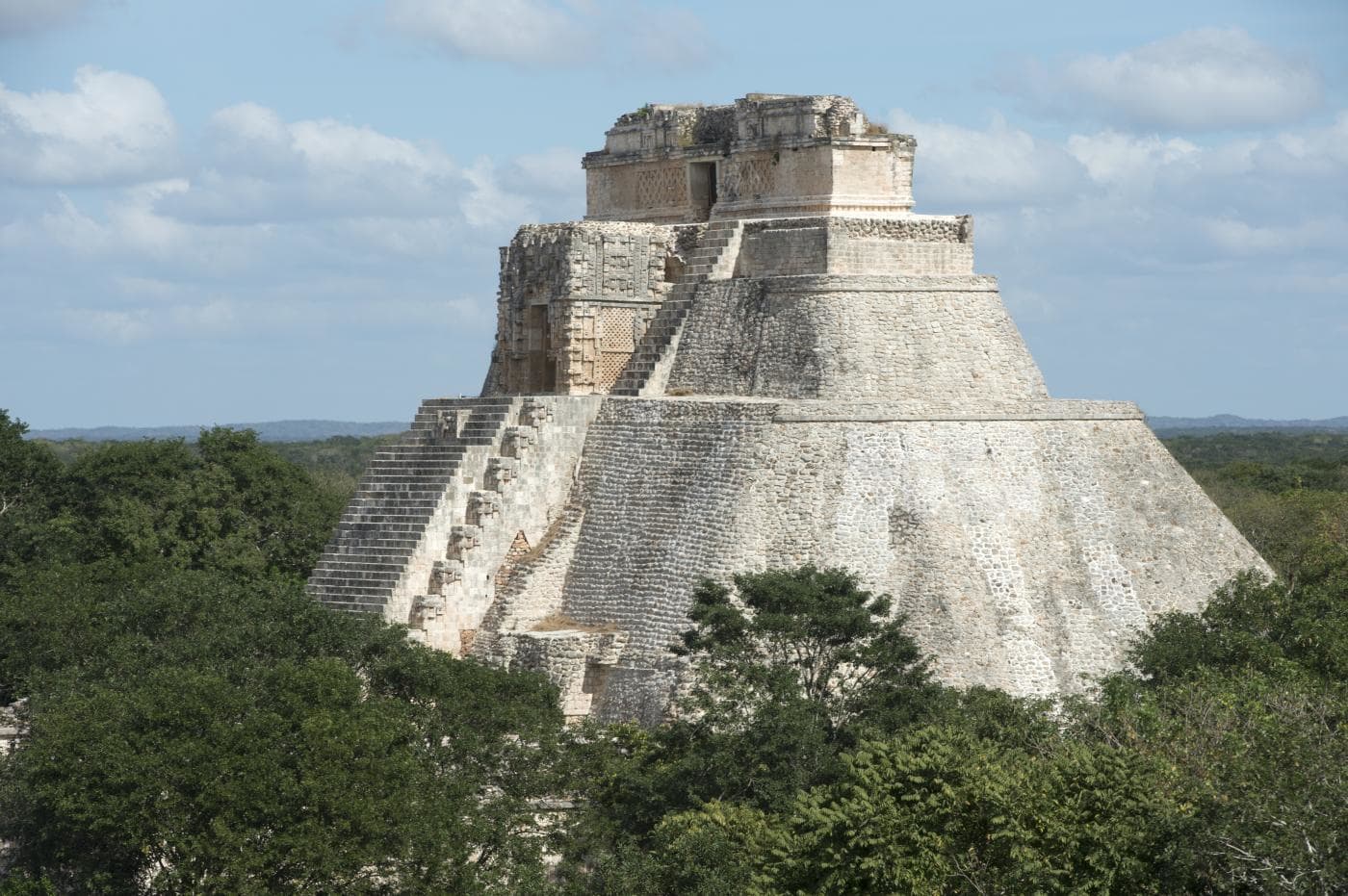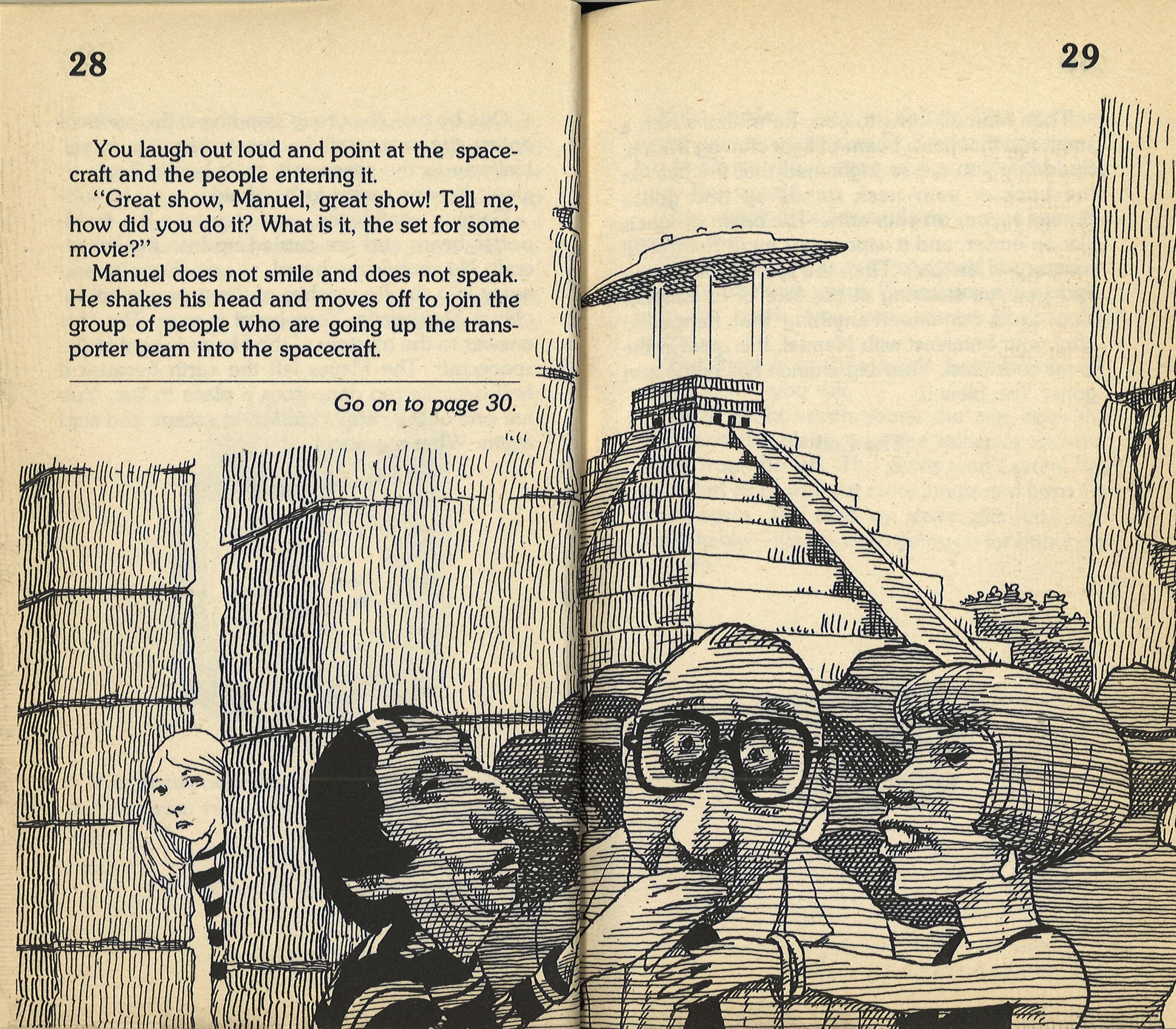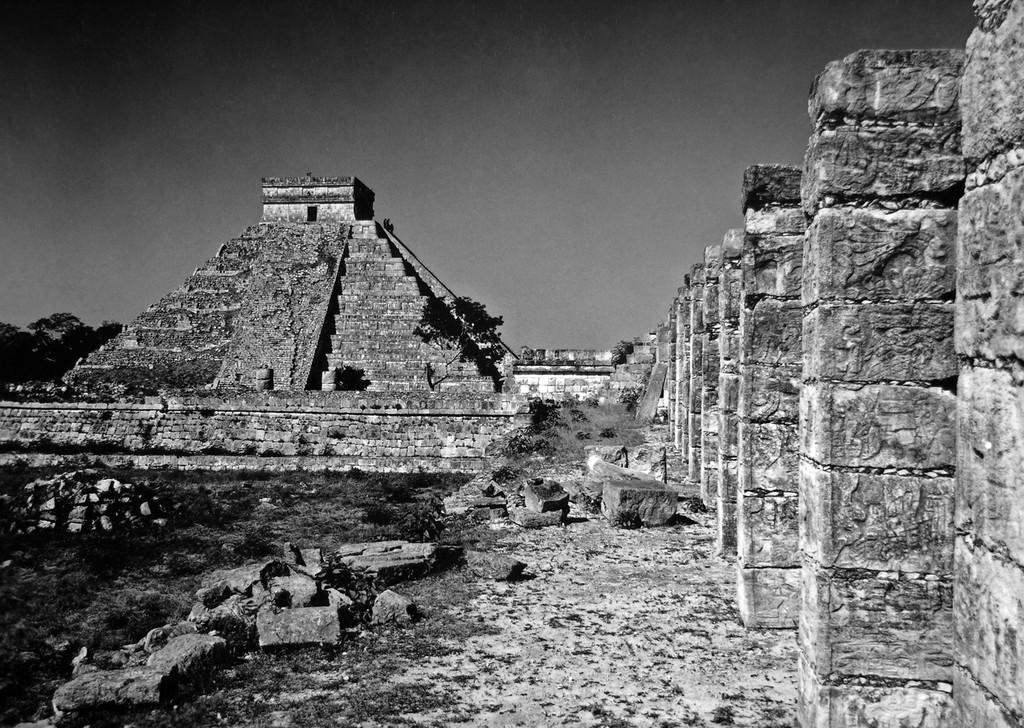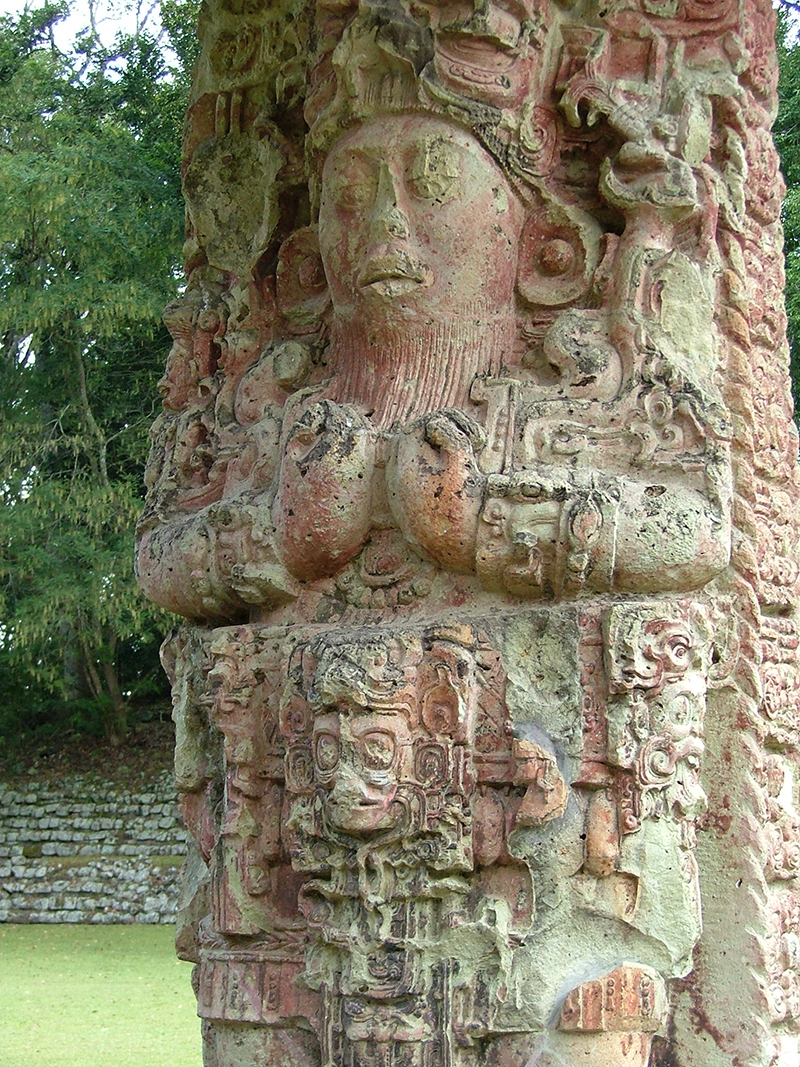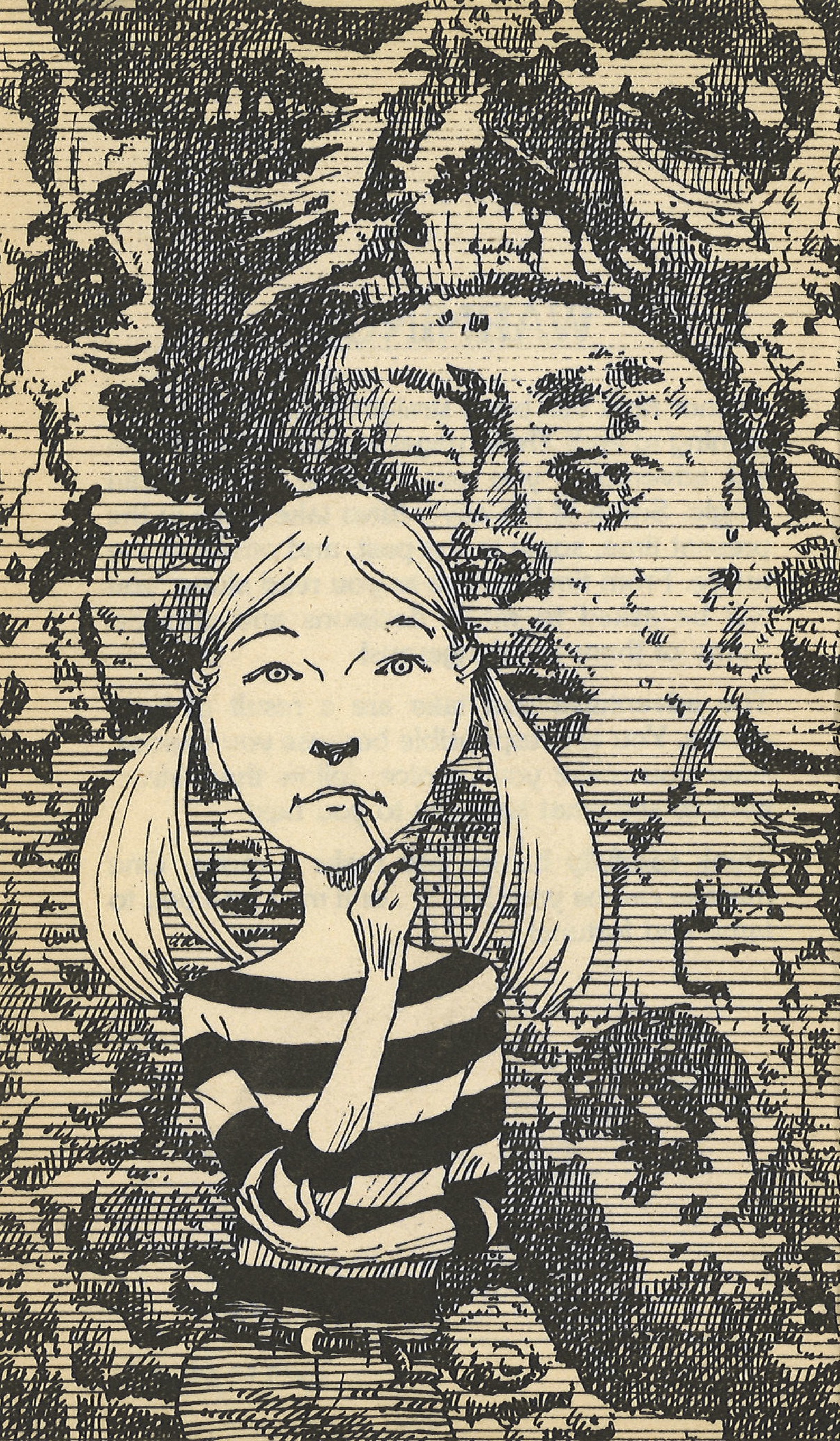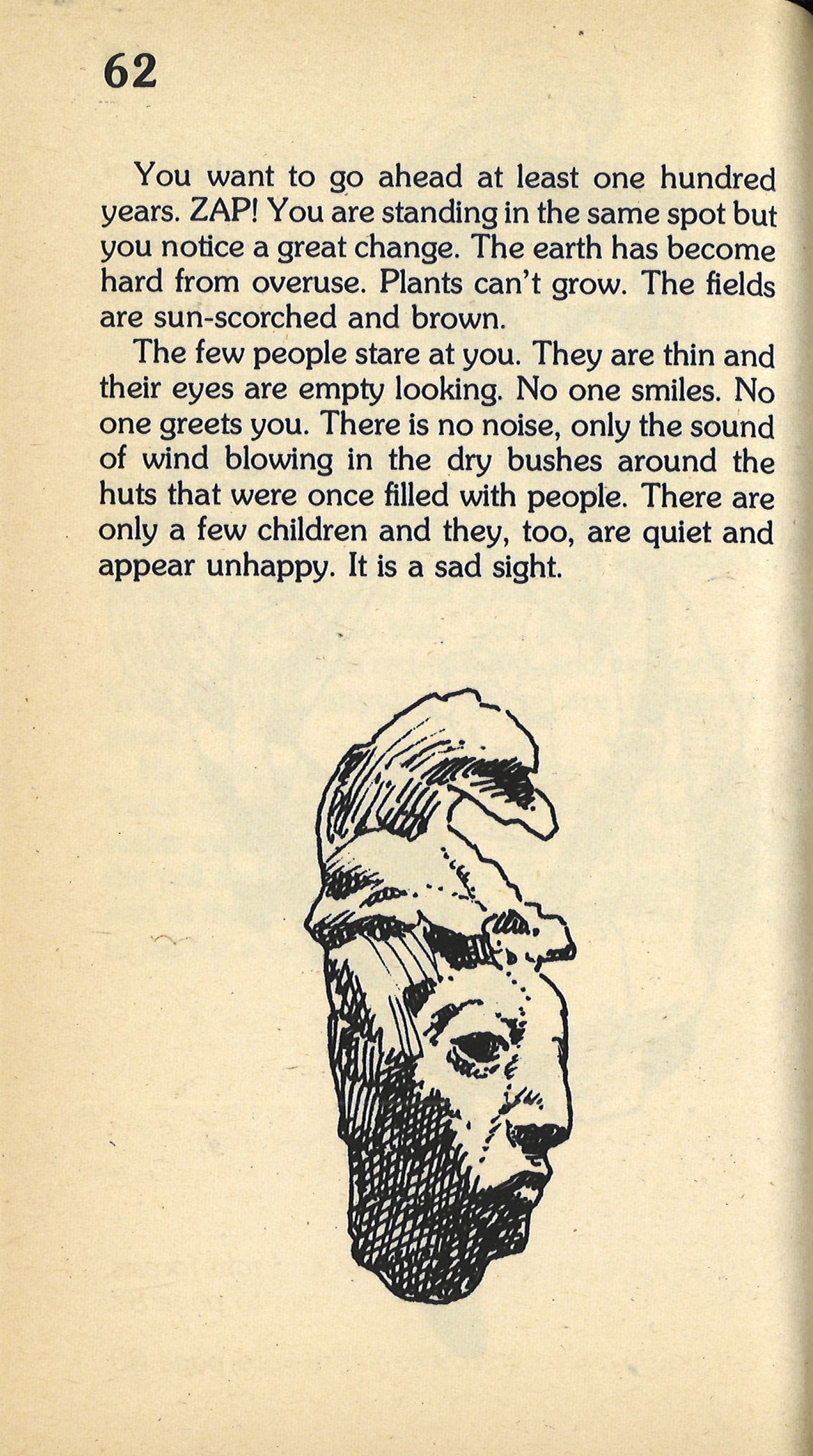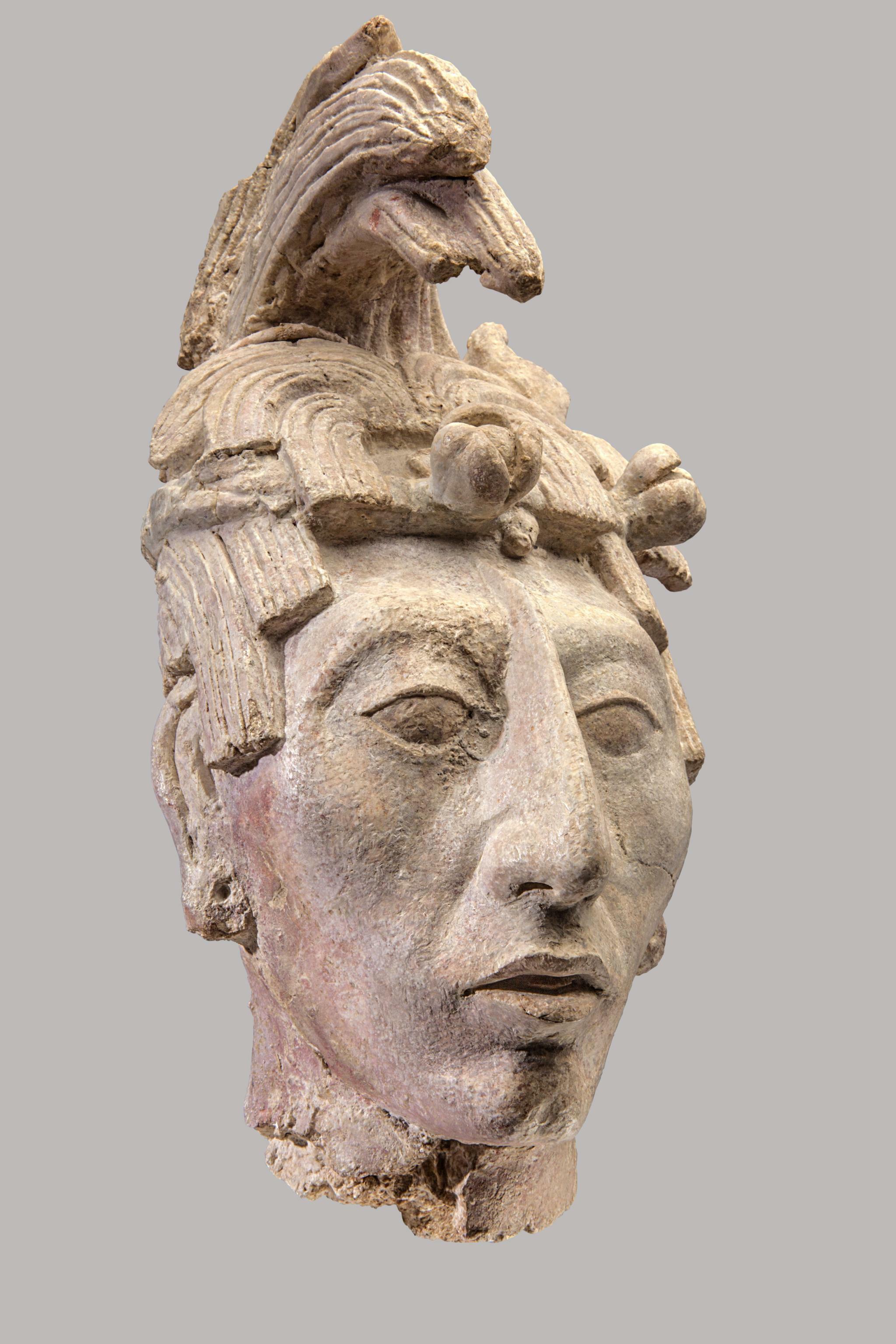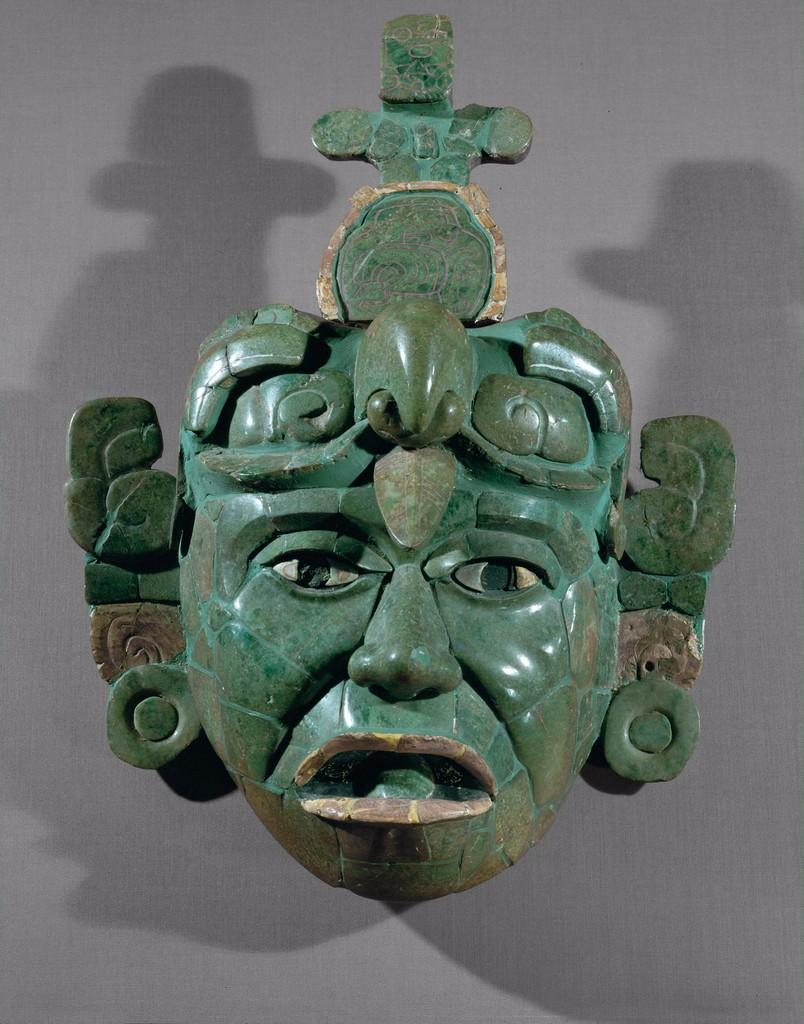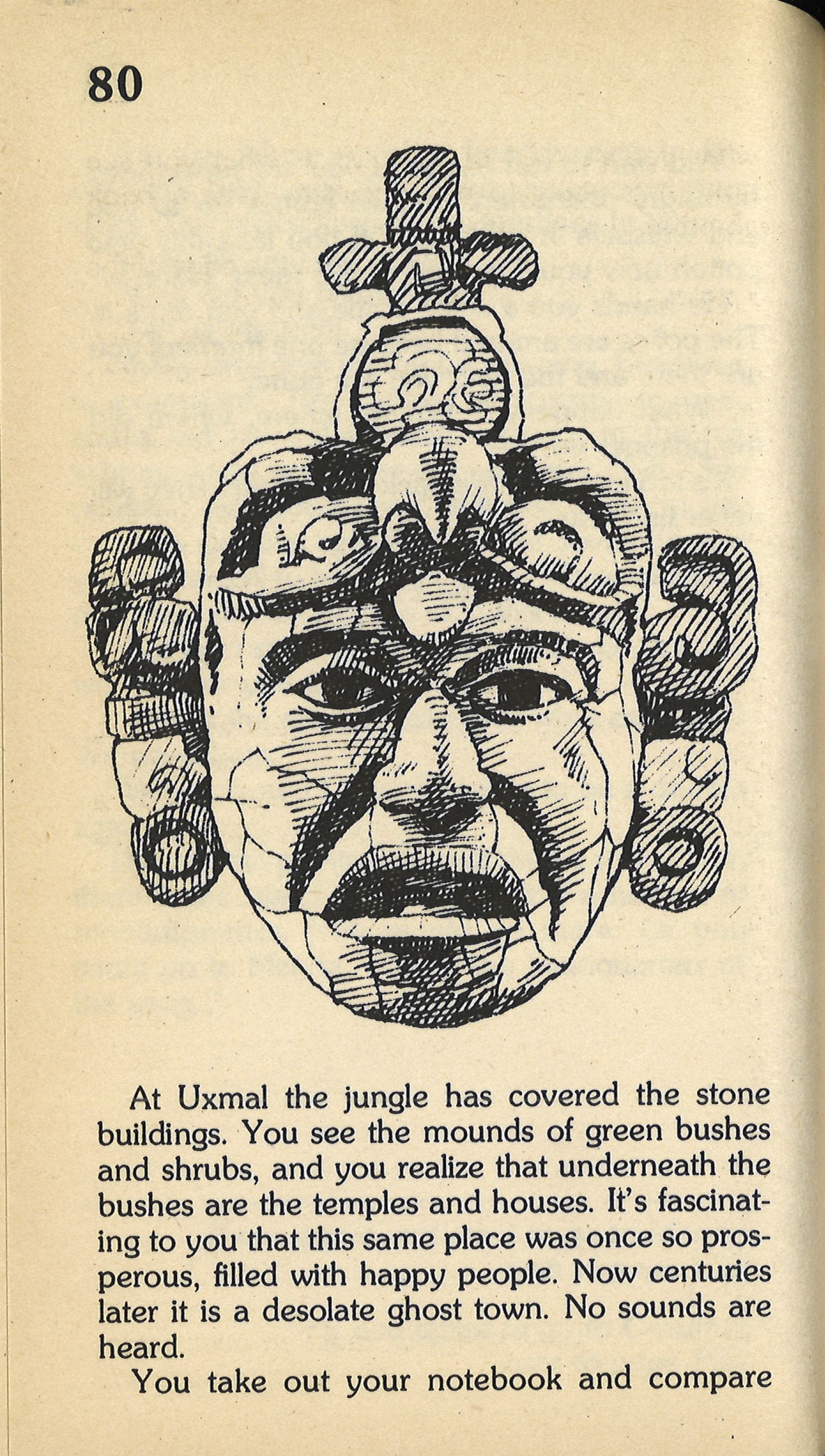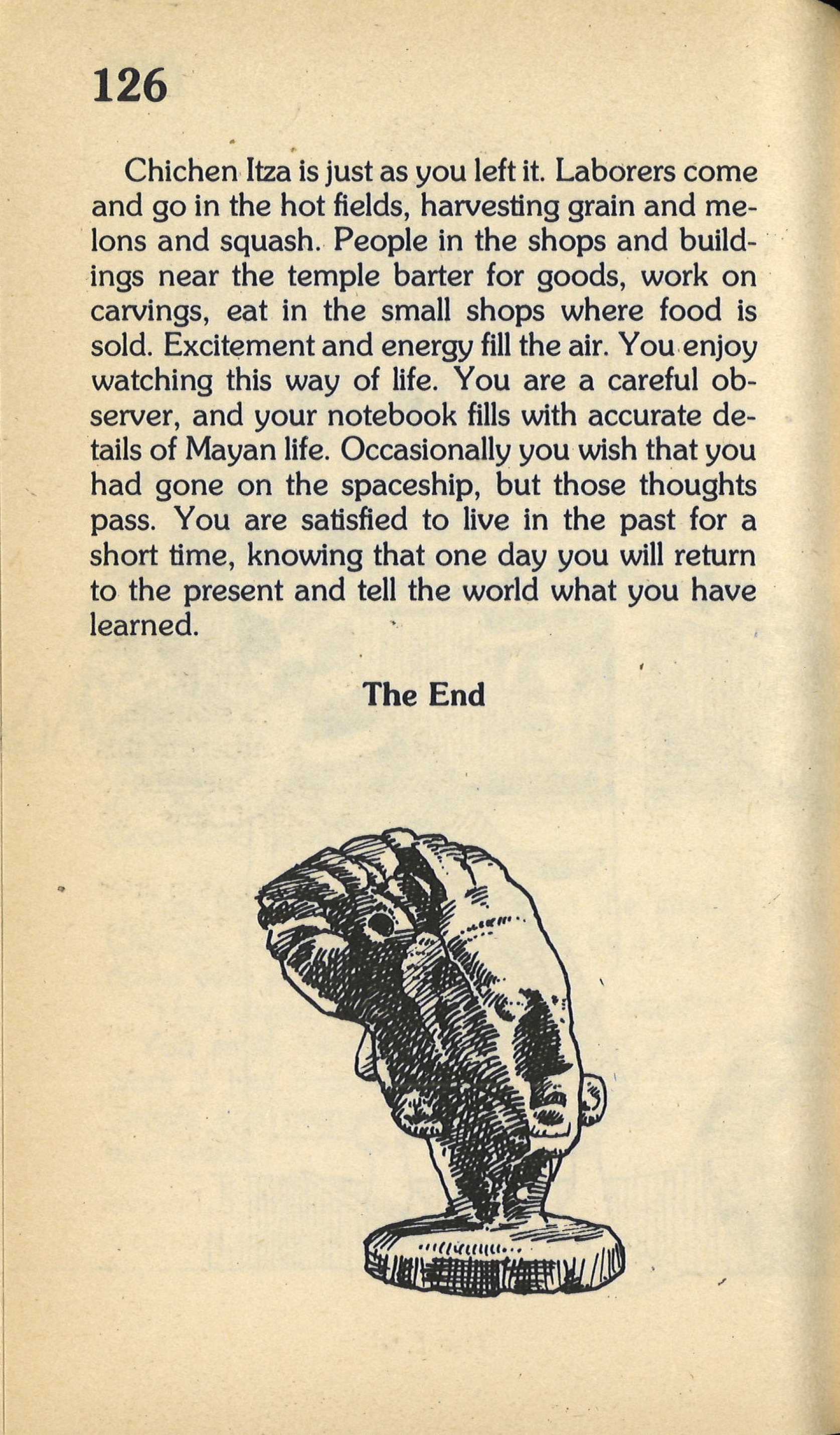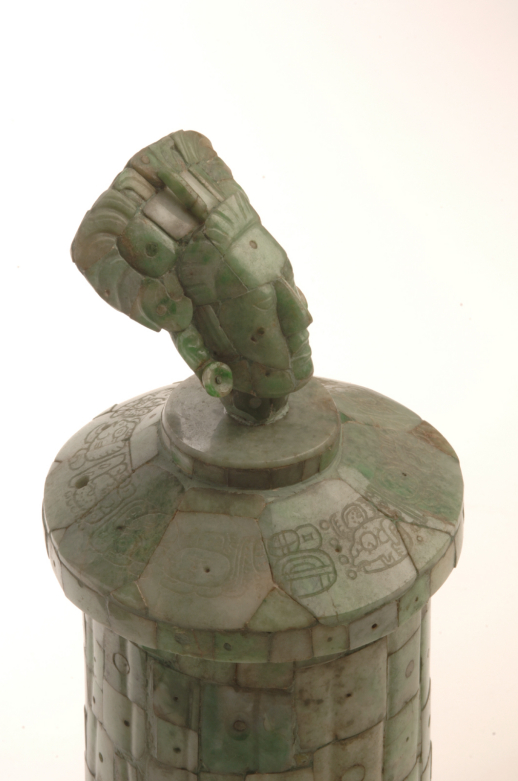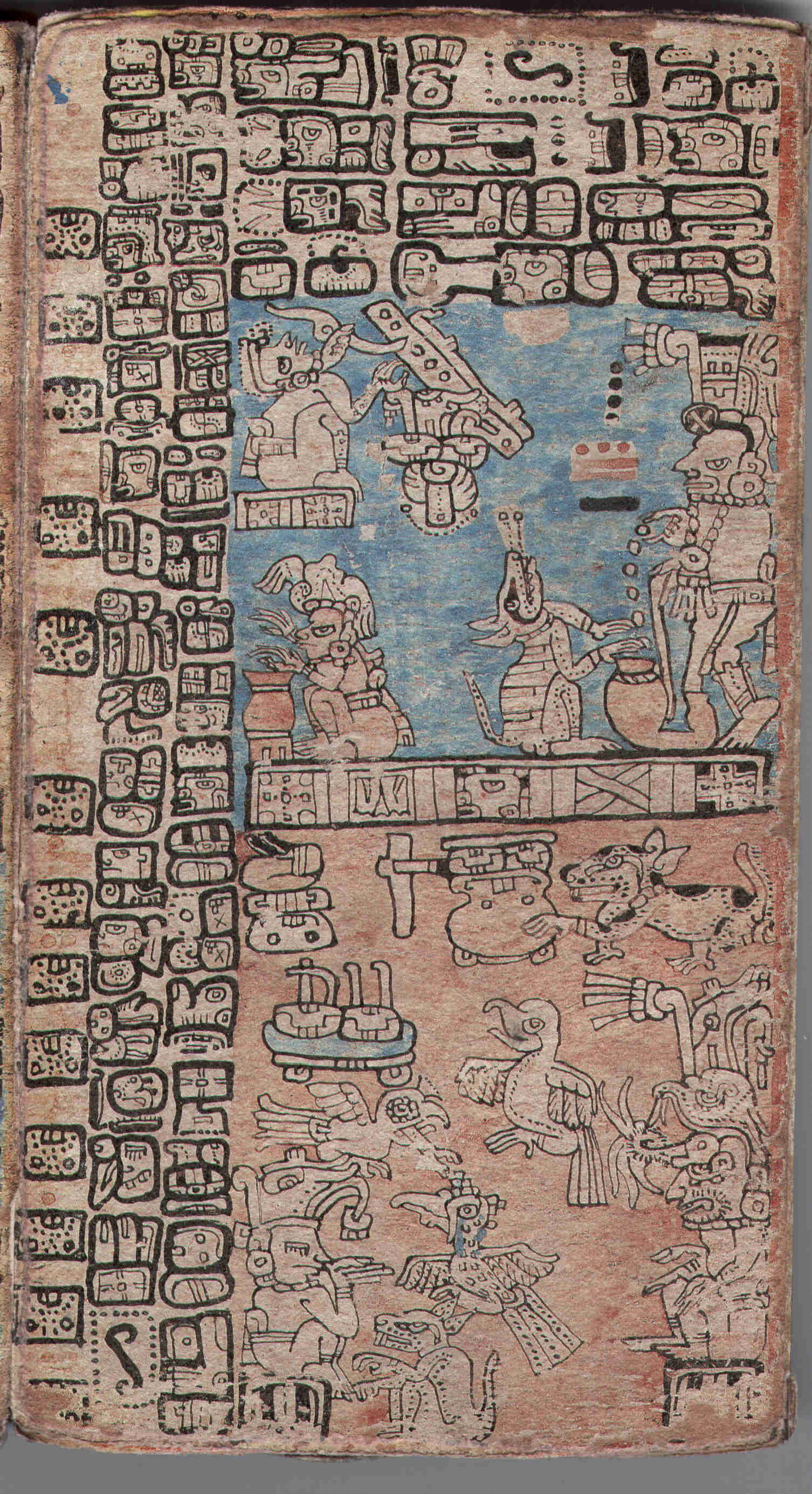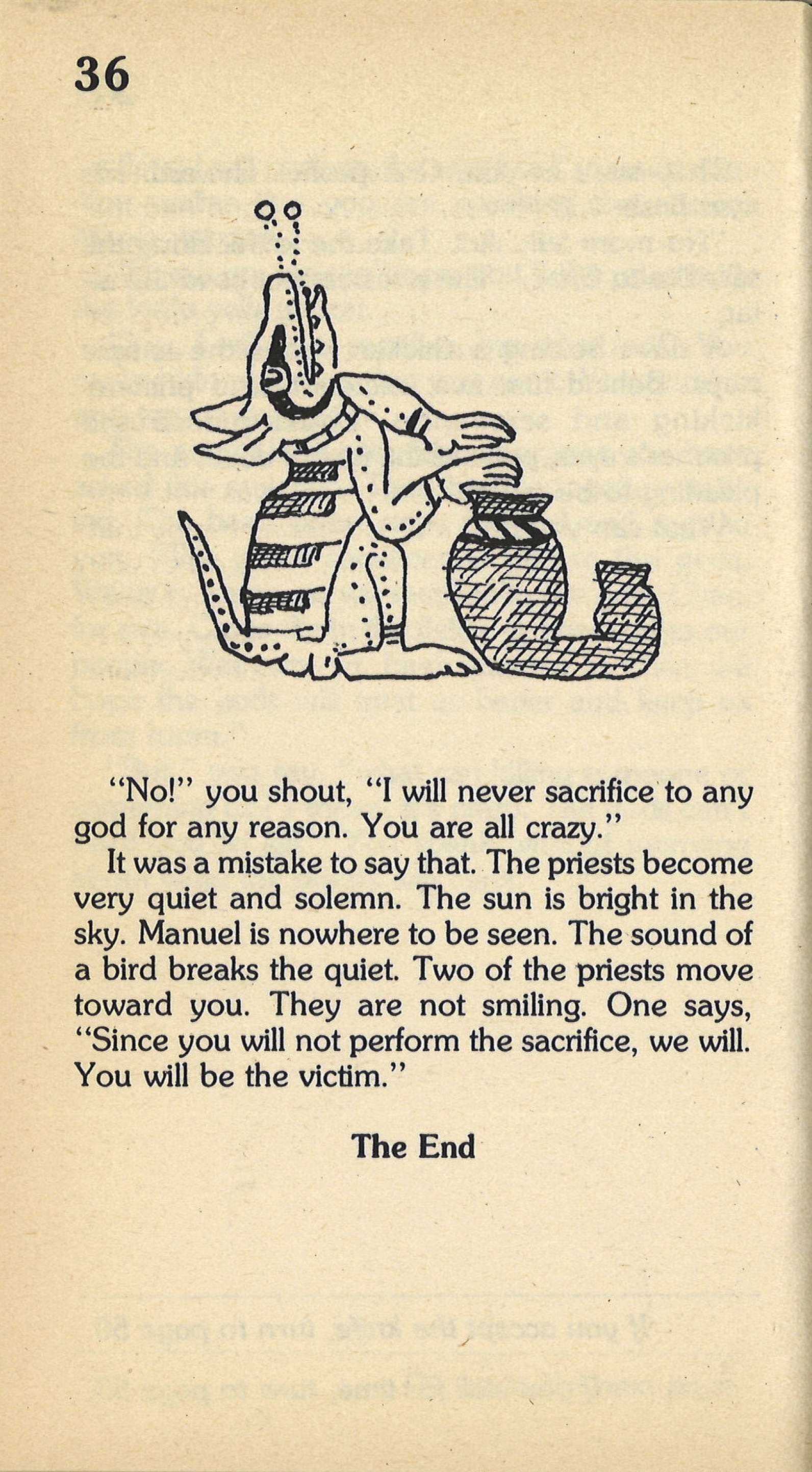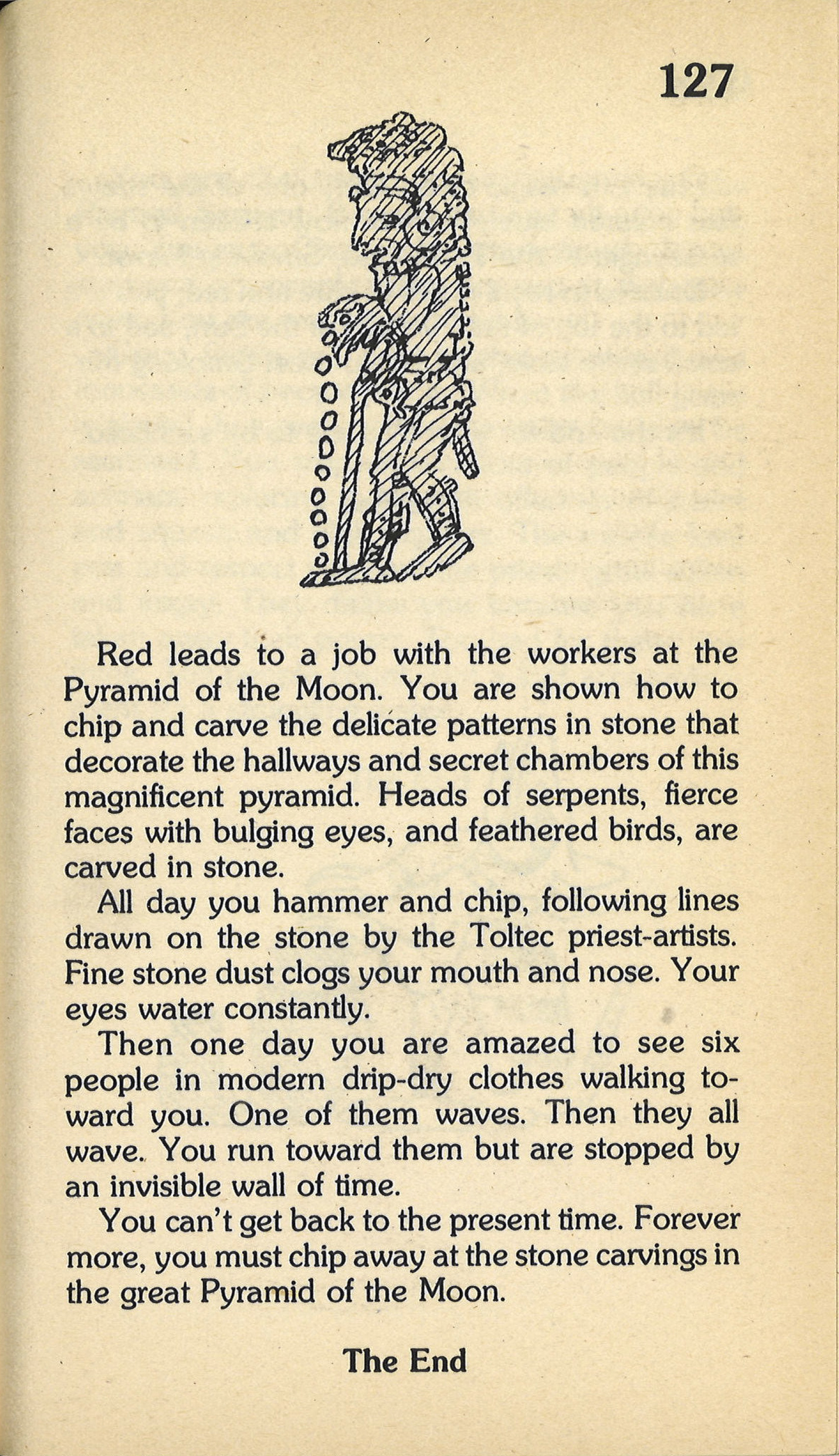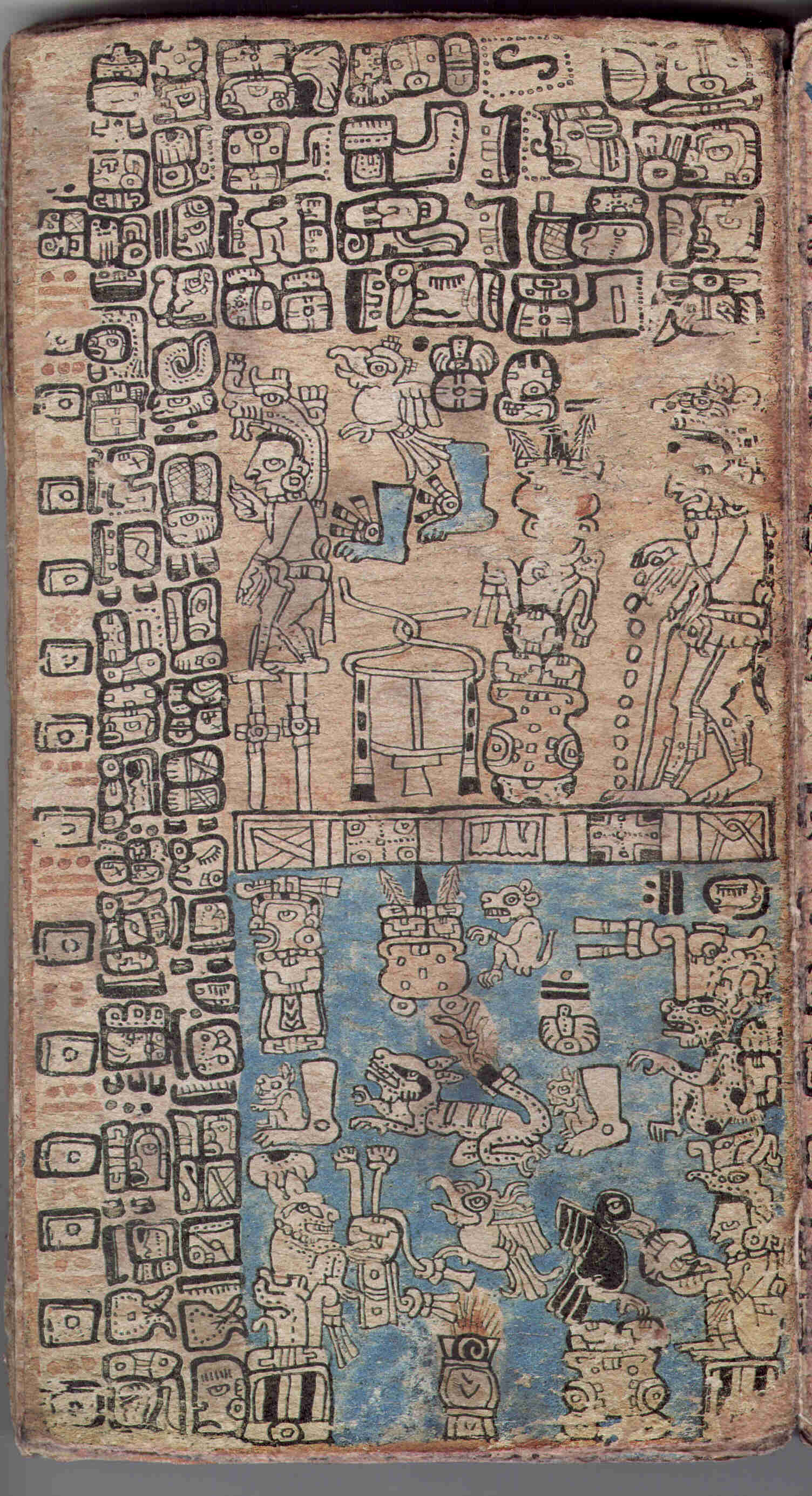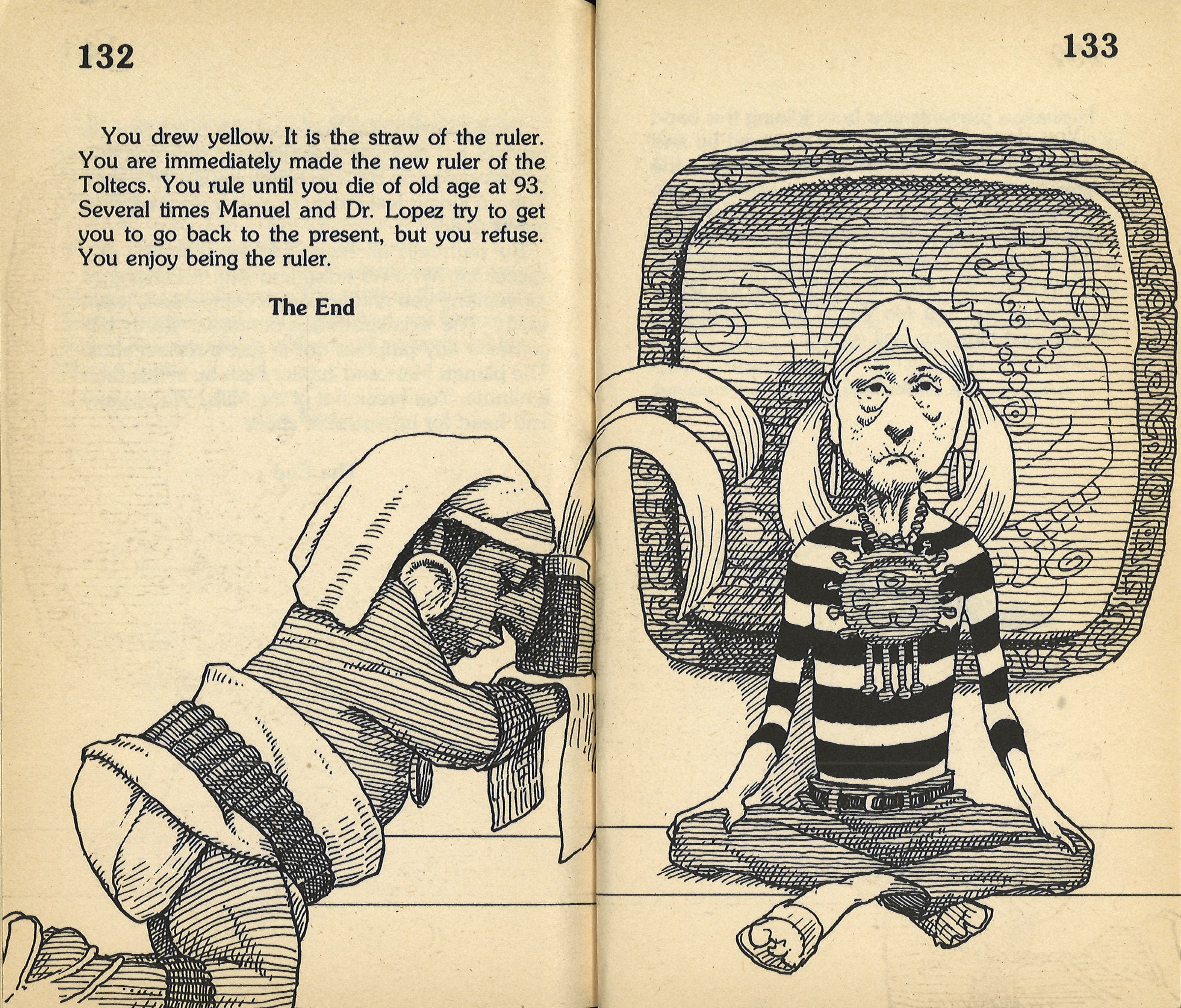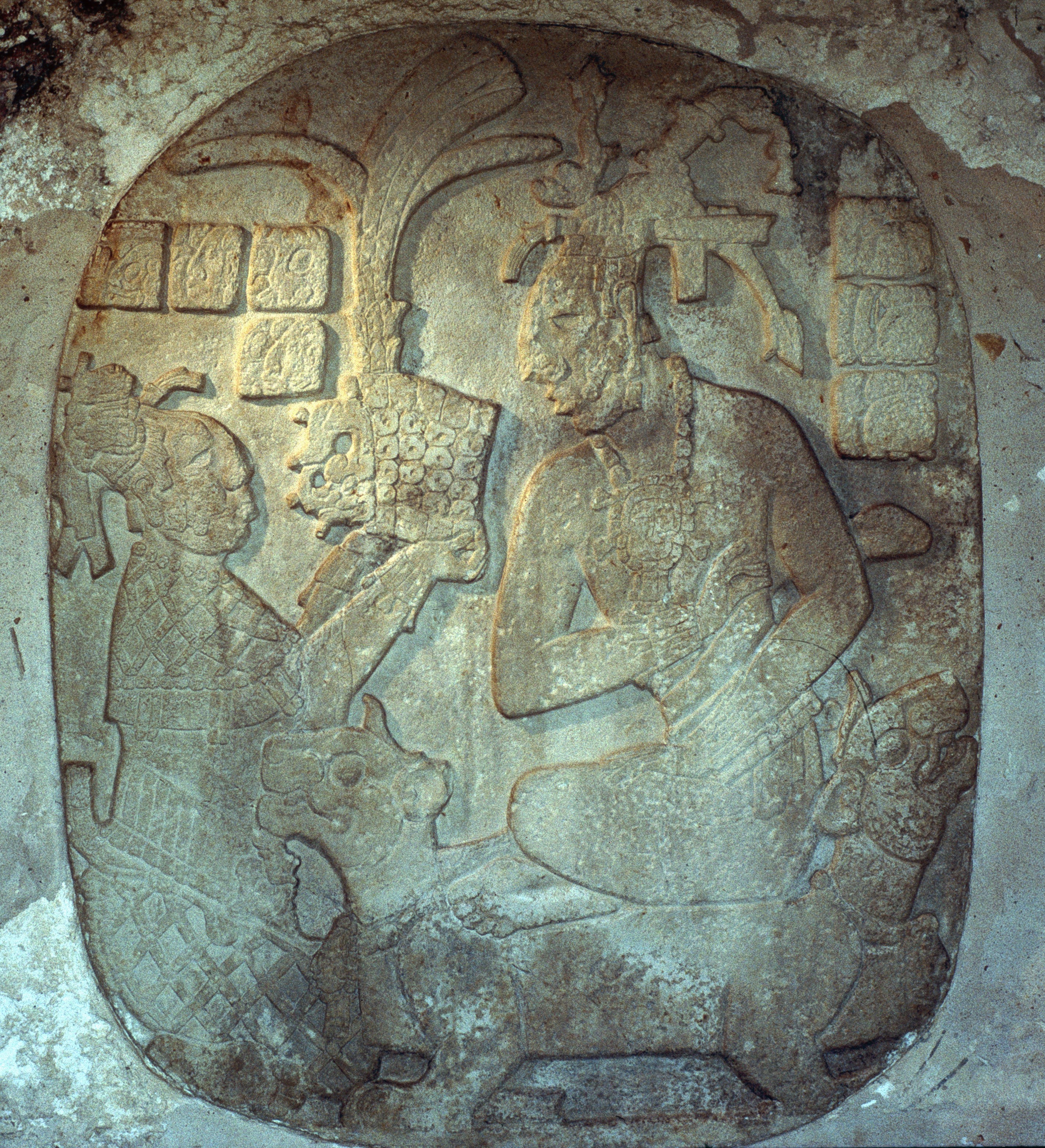In the original (1981) version of Mystery of the Maya by R. A. Montgomery, the illustrations by artist Richard Anderson feature imagery that is based on recognizable sources of Maya art and architecture. Thus, despite some clearly fantastical elements in the various story arcs, such as the presence of UFOs, an attempt was made to ground the visual elements of this book in actual Maya materials. Thus, we see settings such as the Pyramid of the Magicians at Uxmal and the Castillo at Chichen Itza depicted with enough fidelity to be clearly identifiable. The sloping base of the former structure features rounded corners that are unusual in Maya architecture, as well as two separate buildings on different levels as you near the summit, and these features are all captured in the illustration. And Anderson’s depiction of the Castillo shows this nine-tiered radial pyramid with a flying saucer above it, as the protagonist peers out from between two square columns nearby. This reflects the actual setting at Chichen Itza, where the Castillo is located across a plaza from the Northern Colonnade adjacent to the Temple of the Warriors.
Pre-Columbian Sources for the Illustrations in Mystery of the Maya (1981)
Sculptures depicting specific Maya rulers are also reproduced in the illustrations. The face of Uaxaklajuun Ub’aah K’awiil from the west side of Stela C at Copan is illustrated with a good degree of fidelity beneath horizontal lines of hatching and serves as the background for a more cartoonish rendering of the protagonist. And the bottom half of page 62 features a small drawing of a stucco portrait head of K’inich Janaab’ Pakal from Palenque.
Two greenstone portraits from Tikal served as source material for the artist. A mask made of jade and shell pieces from Burial 160 is featured in the illustration used as the book’s frontispiece, and is repeated on pages 80 and 97. And the knob at the center of the lid of of a greenstone-mosaic cylindrical vessel from Burial 116—which is carved in the form of a head and likely depicted Jasaw Chan K’awiil, who was the occupant of that tomb—is illustrated on page 126.
Figures from pages 36 and 37 of the Madrid Codex served as source material for two drawings, each of which was repeated more than once: a dog with its head thrown back as it plays a drum is found in illustrations on pages 36, 47, and 128, while a figure performing a scattering ritual is depicted on pages 94 and 127.
Finally, a two-page spread illustrating a narrative ending where, after having been forcibly taken to Teotihuacan, the protagonist is seated as the ruler of the Toltecs, is based on the Oval Relief from the Maya site of Palenque. The original sculpture shows the ruler K’inich Janaab’ Pakal seated cross-legged on a double-headed jaguar throne as he receives a cylindrical headdress covered in greenstone or shell mosaic pieces and with long quetzal plumes rising from it from his mother, who is seated in front of him. In the illustration, the protagonist, now shown as an old, wrinkled woman, sits in front of a rounded cartouche containing a sketchy composition based on the Oval Relief, and this arrangement is similar to the relief’s actual placement behind a throne in the Palace at Palenque. She wears a pectoral similar to the one worn by Pakal, and a (male) figure who kneels before her holds out a mosaic headdress with long plumes similar to the one offered to Pakal in the relief.
